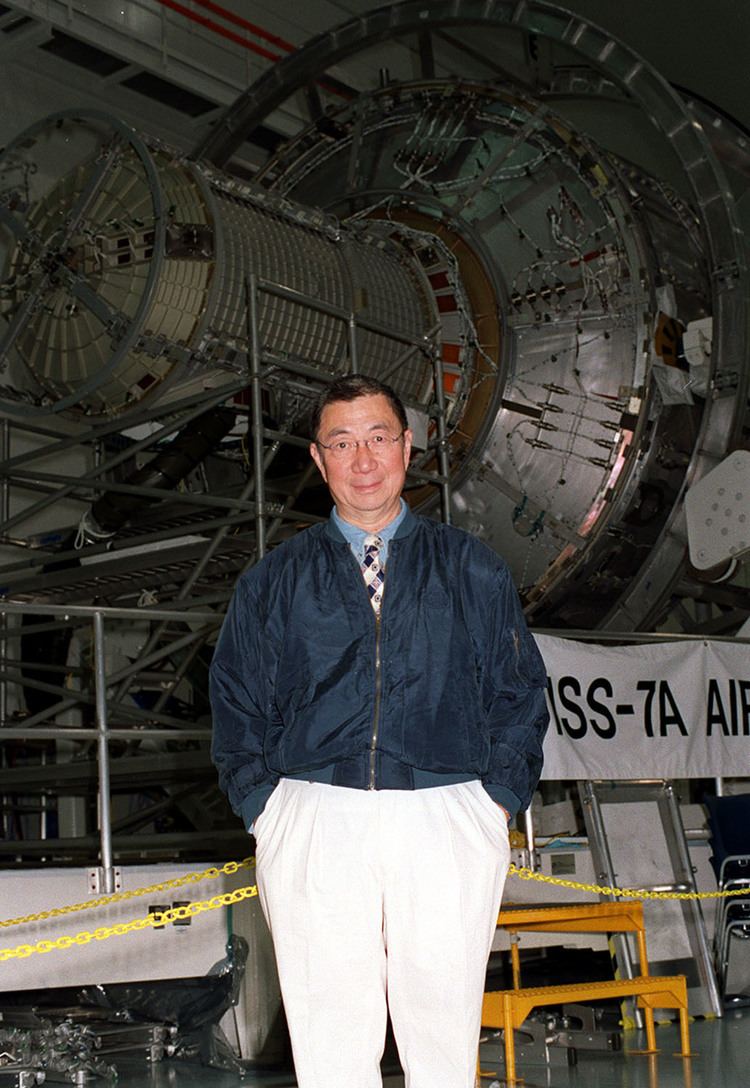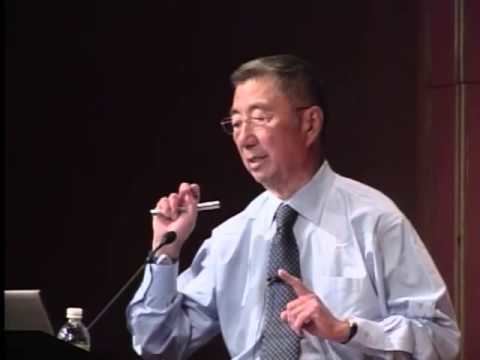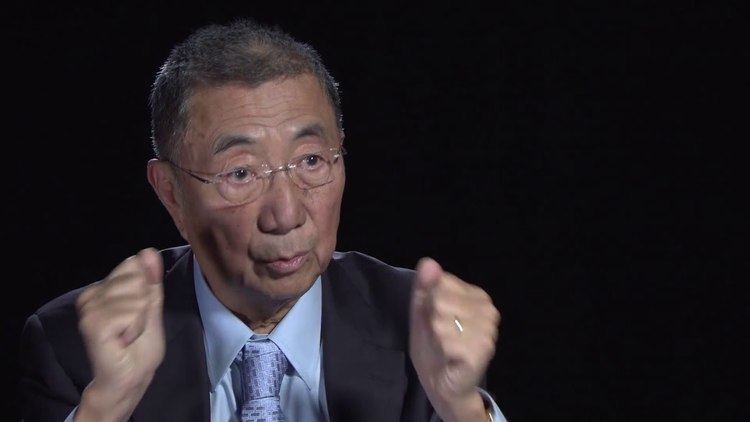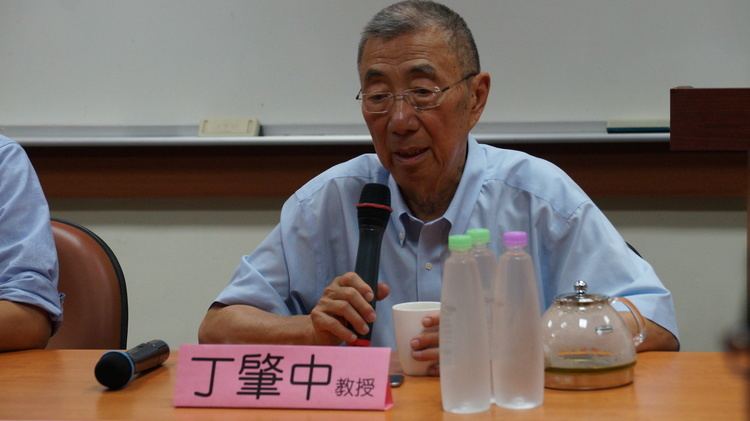Name Samuel C. Nationality United States Role Physicist | Fields Physics | |
 | ||
Institutions CERNColumbia UniversityMassachusetts Institute of Technology Known for Discovery of the J/ψ particle Spouse Susan Carol Marks (m. 1985), Kay Kuhne (m. 1960) Similar People Tsung‑Dao Lee, Burton Richter, Martin Lewis Perl, Chien‑Shiung Wu, George II of Great Britain | ||
Doctoral advisor L.W. Jones, M.L. Perl Academic advisor Martin Lewis Perl | ||
BTC 2019 | Plenary keynote: Samuel C. C. Ting
Samuel Chao Chung Ting (Chinese: 丁肇中; pinyin: Dīng Zhàozhōng; Wade–Giles: Ting Chao-chung) (born January 27, 1936) is an American physicist who received the Nobel Prize in 1976, with Burton Richter, for discovering the subatomic J/ψ particle. He is the principal investigator for the international $1.5 billion Alpha Magnetic Spectrometer experiment which was installed on the International Space Station on 19 May 2011.
Contents
- BTC 2019 Plenary keynote Samuel C C Ting
- Public Lecture of Samuel C C Ting at MG14 Rome July 2015
- Biography
- Nobel Prize
- Alpha Magnetic Spectrometer
- Personal life
- Publications
- References

Public Lecture of Samuel C. C. Ting at MG14 - Rome, July 2015
Biography

Samuel Ting was born on January 27, 1936, in Ann Arbor, Michigan, United States. His parents, Kuan-hai Ting (丁觀海) and Tsun-ying Jeanne Wang (王雋英), met and married as graduate students at the University of Michigan. His parents were from Rizhao County (日照縣), Shandong province, China.

Ting's parents returned to Rizhao two months after his birth. Due to the Japanese invasion, his education was disrupted, and he was mostly home-schooled by his parents. Because of the Chinese Civil War, his parents escaped to Taiwan and started to teach engineering in a local academic institution. From 1948, Ting attended high school and Taiwan Provincial Engineering College (now National Cheng Kung University), but he soon dropped out of the college during his freshman year.

In 1956, Ting was invited to attend the University of Michigan. There, he studied engineering, mathematics, and physics. In 1959, he was awarded BAs in both mathematics and physics, and in 1962, he earned a doctorate in physics. In 1963, he worked at the European Organization for Nuclear Research (CERN). From 1965, he taught at Columbia University and worked at the Deutsches Elektronen-Synchrotron (DESY) in Germany. Since 1969, Ting has been a professor at the Massachusetts Institute of Technology (MIT). Ting is a member of the United States National Academy of Sciences, an academician of the Chinese Academy of Sciences, and a foreign academician of Academia Sinica.
Nobel Prize

In 1976, Ting was awarded the Nobel Prize in Physics, which he shared with Burton Richter of the Stanford Linear Accelerator Center, for the discovery of the J/ψ meson nuclear particle. They were chosen for the award, in the words of the Nobel committee, "for their pioneering work in the discovery of a heavy elementary particle of a new kind." The discovery was made in 1974 when Ting was heading a research team at MIT exploring new regimes of high energy particle physics.
Ting gave his Nobel Prize acceptance speech in Mandarin. Although there had been Chinese recipients before (Tsung-Dao Lee and Chen Ning Yang), none had previously delivered the acceptance speech in Chinese. In his Nobel banquet speech, Ting emphasized the importance of experimental work:
In reality, a theory in natural science cannot be without experimental foundations; physics, in particular, comes from experimental work. I hope that awarding the Nobel Prize to me will awaken the interest of students from the developing nations so that they will realize the importance of experimental work.Alpha Magnetic Spectrometer
In 1995, not long after the cancellation of the Superconducting Super Collider project had severely reduced the possibilities for experimental high-energy physics on Earth, Ting proposed the Alpha Magnetic Spectrometer, a space-borne cosmic-ray detector. The proposal was accepted and he became the principal investigator and has been directing the development since then. A prototype, AMS-01, was flown and tested on Space Shuttle mission STS-91 in 1998. The main mission, AMS-02, was then planned for launch by the Shuttle and mounting on the International Space Station.
This project is a massive $1.5 billion undertaking involving 500 scientists from 56 institutions and 16 countries. After the 2003 Space Shuttle Columbia disaster, NASA announced that the Shuttle was to be retired by 2010 and that AMS-02 was not on the manifest of any of the remaining Shuttle flights. Dr. Ting was forced to (successfully) lobby the United States Congress and the public to secure an additional Shuttle flight dedicated to this project. Also during this time, Ting had to deal with numerous technical problems in fabricating and qualifying the large, extremely sensitive and delicate detector module for space. AMS-02 was successfully launched on Shuttle mission STS-134 on 16 May 2011 and was installed on the International Space Station on 19 May 2011.
Personal life
In 1960 Ting married Kay Kuhne, and together they had two daughters, Jeanne Ting Chowning and Amy Ting. In 1985 he married Dr. Susan Carol Marks, and they had one son, Christopher.
